Хаас за Белгия
Ромен Грожан:
What was your first experience of racing a car at Circuit de Spa-Francorchamps and how did you get on?
I think it was back in 2004 in a Formula Renault Eurocup race. There was something like 45 cars on the grid back then. I know we didn’t qualify that well, and in those circumstances, Spa always becomes an interesting race. When you see the circuit on TV, it’s one of the few where you really see how up and down it actually is. But when you get there in real life, it really goes up and down. I think the maximum gradient of Eau Rouge is something like 20 percent. It’s a big thing. In a faster car though, the better Spa gets.
Describe the feeling of wheeling a Formula One car around Spa-Francorchamps for the first time, picking up speed and testing the limits of the circuit. What stood out most on your debut there in a Formula One car?
Obviously, at Spa it’s all about the speed, you really see that. When you drive a Formula One car you go down Raidillon, reaching 300 kph before you go there then you feel like the wall’s in front of you. The corners are very flowing through the middle part of the track, then you’ve got Pouhon, the double-left corner – which is absolutely mega. That’s probably the best corner of the whole season. The low speed corners, the last turn and first turn, they’re quite key for overtaking. The key is always finding the right balance between the flowing corners and those two low speed ones. Every year in Spa though, when I go through Eau Rouge for the first time in the weekend, I feel sick. My stomach really goes up and down, but it goes away after the first timed lap. It's an amazing circuit.
You last stood on the Formula One podium at Spa in the 2015 Belgian Grand Prix after a heroic drive in the troublesome Lotus E23. Where would that drive rank in your list of personal bests and is it extra special to savour a podium at such an historic circuit?
Yes, obviously it was a very good weekend for us – well, sort of a good weekend, there were a few issues outside of the track, but on track everything was good. From free practice the car worked really well, then I think I qualified fourth. In the race I came back from ninth, we had a gearbox penalty after quali. Everything worked to plan in the race. I could overtake the Red Bull, the Williams and we had a good level of drag versus grip. On that day it just felt easy – those are your best drives as everything just feels natural. Taking a podium at Spa is always very special. Especially for me, I’ve had a bit of a hate-love relationship with Spa. Obviously, a lot of people remember the start in 2012, but I’d rather remember the 2015 podium.
Off track you keep yourself busy now, amongst other things, managing your own esports team? What led you down that path and what excites you the most about that side of the industry?
Well the lockdown and self-isolating this year pushed things forward. I really enjoy managing my esports team, finding the sponsors, talking to the drivers and looking at which races they’re going to do. I also get involved in some of the races. It’s time consuming and now that the season has started, I’m not as involved as I was early on, even though when I get home I do a bit of driving myself. I always keep an eye on the results and make sure our cars are good. I just think it’s great that anyone in the world can drive against guys like Max Verstappen, Lando Norris – they’re on the games, as well as myself and so on. It’s great fun. Yes, it’s different from real racing, but it’s also as close as it can get in terms of simulation. It’s great that we get to chat with people, race against them, and things like Twitch make it easy to engage with people.
Кевин Магнусен: What was your first experience of racing a car at Circuit de Spa-Francorchamps and how did you get on?
I think it was a Formula Renault 2.0 Northern Eurocup race back in 2009 – I scored a couple of podiums and a fastest race lap.
Describe the feeling of wheeling a Formula One car around Spa-Francorchamps for the first time, picking up speed and testing the limits of the circuit. What stood out most on your debut there in a Formula One car?
My first Formula One race there back in 2014, I was most looking forward to Eau Rouge. Back then we’d just got these new hybrid cars, it was the first year of this era, and the cars didn’t really have that much downforce. Eau Rouge was actually a bit of a challenge back then, which was pretty cool. Usually, with these cars – and not that it doesn’t feel good anymore, it’s just less of a challenge in the bigger downforce cars. It’s not such a technical part, but nonetheless, it’s a mega part of the track. I think, and I could be wrong, that we could use DRS back then. You had to switch it off, then on again at the top. Nonetheless, it was a much bigger challenge back then. It’s always a great experience racing around Spa in Formula One, it’s really one of those legendary tracks.
Your 2016 Belgian Grand Prix proved memorable unfortunately for your high impact lap six crash at the exit of Raidillon. As a race car driver do you simply put an incident like that behind you or does it enter your thoughts at all the next time you take to that particular circuit? How do you reboot and attack the track?
The 2016 race, well, unfortunately I just remember it for that crash. I lost the rear at the top of Raidillon and hit the wall on the outside – resulting in a massive crash. I put it behind me pretty easily, nothing really happened physically aside from a few bruises. I was fine the weekend after when we raced at Monza. It wasn’t really a big deal. A big crash but all was well afterwards.
After six races in seven weeks, and with a third Formula One triple-header starting in Belgium – how demanding, both physically and mentally, is this new-look 2020 calendar on you as a driver with so few opportunities for downtime?
Honestly, for me as a driver, I don’t feel like it’s a massive thing. Of course, it’s busy and we’re away a lot right now, and with all these triple-headers we don’t really get to see our families, but we were all together for a few months during the lockdown. I missed racing, I missed Formula One hugely, so I’ve enjoyed being back like this with the intensity of all these races together. It’s been good to be driving again and getting into racing. I feel worse for the mechanics as they work really, really long hours during the weekends. They then have to work on the cars between races as well. The engineers also work really hard. As drivers we have less to do. Yes, there’s a lot of meetings and analyzing data, but we don’t go to work every day. We show up at the weekends having had some meetings during the week. It’s not as intense as it is for the rest of the team. We’re very lucky in that sense, but of course, we then take the risks on track and all the rest, but I do feel worse for the team with this schedule.
Гюнтер Щайнер: Haas F1 Team committed to the new Concorde Agreement last week along with the nine other Formula One teams. Can you share what the decision-making process was behind Gene Haas’s commitment to moving forward for another five years in the sport and what it means to both yourself and the team in general?
I guess Gene (Haas) looked at it and Formula One’s still a very good tool for getting his brand name, Haas Automation, out in the world. It works – otherwise he wouldn’t be doing it. He loves the sport as well. Even if it is a big financial commitment, with the new regulations coming in, it should make the playing field more even and the commercial aspects better for the smaller teams – so as a result he has decided to continue. For me, it means – even at the moment when we’re not running competitively, we’ve got a Formula One team which works, and that’s more down to the team than to me. I’m part of the team though, we all work together, and in the end, Gene believes in the team. Everybody is, for sure, happy to be moving forward now with the agreement signed.
Does the signing of the Concorde Agreement and the new technical regulations coming in 2022 mark the boldest turning point in Formula One’s storied history? Do all these measures add up to give an outfit like Haas F1 Team a truly competitive shot, both on and off track, in the sport?
The budget cap should level the playing field, it will level the playing field – just maybe not in the first year, but in the mid-term for sure. The payments, to make it more equal, will also mean the smaller teams get a little more revenue. It’s never enough for the small teams by the way, but it levels the field and that should be the aim of a sport – any day, anybody can win. It’ll take a while until that happens but for Formula One it’s a big step in the right direction. Times change and I think Liberty did a great job in adapting to those times and making changes when it was needed. It was needed a few years ago, but it’s better late than never.
With the Belgian Grand Prix usually marking the second half of a Formula One season – does it feel a little strange preparing to go there with only six races under the team’s belt?
Everything seems strange this year. It feels like we’ve already done more than half a season of racing, but even if we’ve only raced six events, we’ve been working hard from March onwards. It’s been a long season even if people don’t see it given we only started racing in July. So, it definitely feels like we’re over halfway, even if we’re not. We just need to keep doing what we do.
After six races in seven weeks, and with a third Formula One triple-header starting this weekend in Belgium – how demanding, both physically and mentally, is this new-look 2020 calendar on the team? It’s unprecedented in terms of the history of Formula One but could you see this becoming more normal as the series looks to add additional races in the future?
We have to treat this as an exceptional year. A lot of the staff did not work for much of the first half of the year, so they could fill their energy tanks up. So, I think it’s a little bit lighter, but going forward, you cannot make this the normality. People cannot do this. We shouldn’t try to do this because it’s not productive.
With no plans for any upgrade packages coming this season, does that allow the team to better understand the core concept of the VF-20 and is that a benefit looking ahead to the 2021 season and the continuation of this car package?
That is the plan. We need to understand this car, the VF-20, and build on that. We can try to iron out the issues we have this year for a better 2021.





















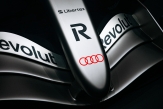
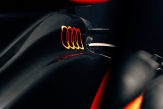
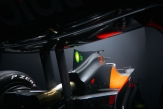
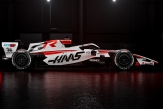
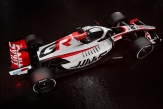
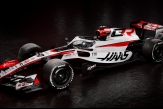
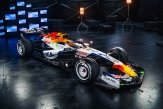
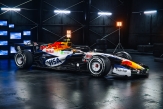

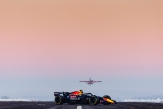
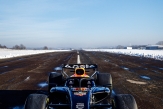
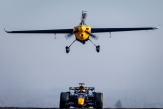
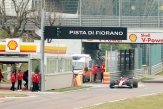
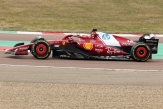
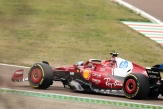
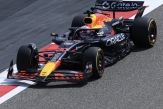
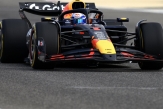
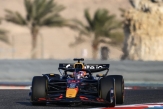

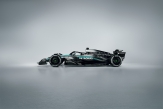
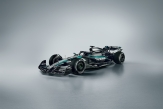
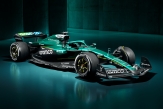
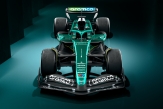
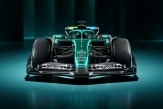
.jpg)
.jpg)
.jpg)

02/12/2025 от Огнян Тенчев (drJeckyll), няма коментари